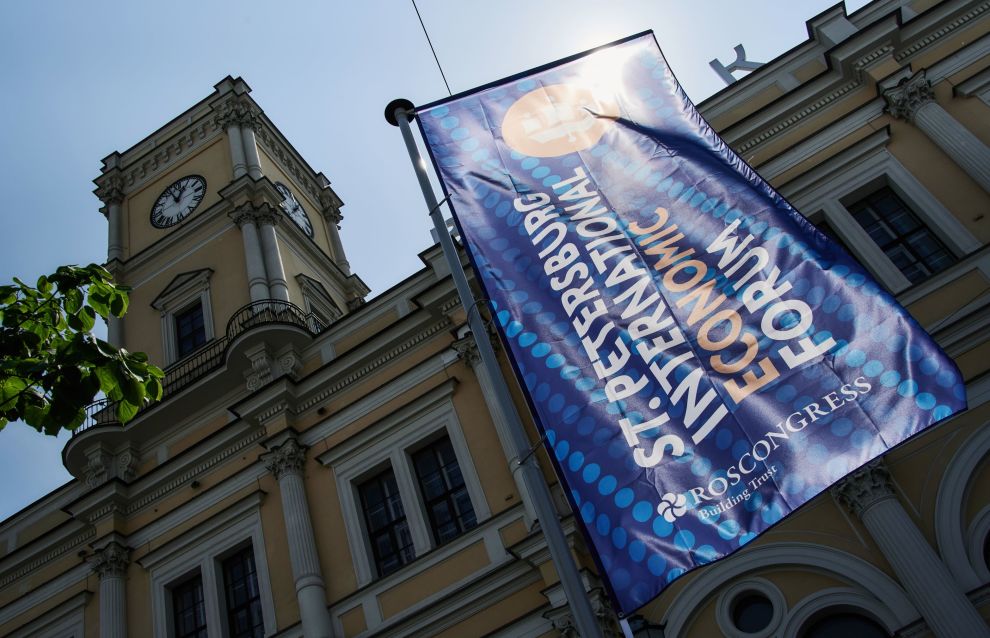SPIEF-25 participants discuss short-term development prospects for the Arctic and the Northern Sea Route
SPIEF participants representing Arctic regions, the business community and the academia discussed the current status of the Northern Sea Route and its development prospects at the session Sea Route along the Northern Coast of Rus’: 500 Years of History.
According to Russian Federation Minister for the Development of the Russian Far East and Arctic Aleksey Chekunkov, the region has gained absolutely new development prospects after the adoption of the Presidential Executive Order on the strategy for developing the Arctic zone until 2035.
“This is absolutely clear. The Arctic is of immense importance for the world economy as a source of mineral resources and raw materials, such as fertilizer, nickel, cobalt, platinum, copper, oil, gas, pulp and paper, timber, diamonds, and more. It also has a shipbuilding industry,” he said.
Mr Chekunkov added that the world community was focusing on the Arctic, since the Northern Sea Route – a shortcut from Asia to Europe – was emerging as a key transport corridor.
“It is clear that the Arctic is dynamically developing. Russia’s task in this context is to lead in technologies and economic management in the Arctic. As we work on master plans, therefore, we seek to record the most effective practices,” Aleksey Chekunkov stressed.
According to Murmansk Region Governor Andrey Chibis, his region is a main development driver in the Arctic, accounting as it does for the biggest unfreezing port that is of fundamental importance for the NSR and the world’s unique fleet of nuclear-powered icebreakers.
“While attending the International Arctic Forum in Murmansk, the President opened a new port, Lavna, built on the first port concession. It is a major hi-tech facility. Before that, we built a new 50-kilometer railroad in 2023. We have been instructed to develop the Murmansk transport hub by boosting the capacity of terminals and expanding the carrying capacity by no less than 200 percent. Our goal is to transform the port of Murmansk into a multi-mode transport hub so as to implement the abovementioned projects,” Mr Chibis said.
Arkhangelsk Region Governor Alexander Tsybulsky pointed to the commercial potential of the Northern Sea Route that passes through his region’s coastal waters. In 2023, cargo transshipment at seaports dropped by almost 25 percent but it recovered the lost ground in 2024 due, among other things, to contracts signed with Chinese partners. Since early 2025, shipping has also increased by 10 percent on the same period last year.
“The Northern Sea Route is a link and a key economic asset of the Russian Arctic. It is essential to further development of mineral resources and industries in the North. We must accurately calculate what kind and how much state support we need and define our priorities,” Mr Tsybulsky said.
He also noted that the Arkhangelsk Region’s priority was to speed up the development of port, rail and motor road infrastructure so as to facilitate the Northern Sea Route’s operation. Yet another crucial project was to create a deep-water area in the port of Arkhangelsk jointly with Rosatom and Eurosib Group. For this purpose, the region has signed an investment declaration and attracted key investors.
For his part, Chukotka Governor Vladislav Kuznetsov stressed that the maritime corridor helps to solve logistical problems and opens prospects for mountain projects and new energy sources in the region.
According to Mr Kuznetsov, a specialized terminal and port were being created in Pevek to cater to the Bayim copper project. Besides, the Northern Sea Route facilitated the delivery of power sources. It is being planned to build four nuclear power plants with a total capacity of 10 MW, since it is economically ineffective to lay power transmission lines there.
Vladimir Panov, Rosatom’s special representative for Arctic development and deputy chairman of the State Commission for Arctic Development, noted in his remarks that the freight traffic flow along the NSR had been growing rapidly over the past decade.
According to Mr Panov, a transition to the year-round navigation was necessary, if the NSR’s stability was to be ensured. Given that the Arctic’s contribution to the national economy is currently around 15 percent, it is also necessary to create a new system of state support for the region. The task for now is to include budgetary and extra-budgetary sources of funding in the official documents for the period until 2040.
Mr Panov also said that Russia had for the first time sent 7 million tons of cargoes in the eastern direction, including 3.1 million tons in transit through the Northern Sea Route (+50 percent). Fourteen container runs were performed in the same direction, with a ship bound out of St. Petersburg reaching a port in China within 23 days.
